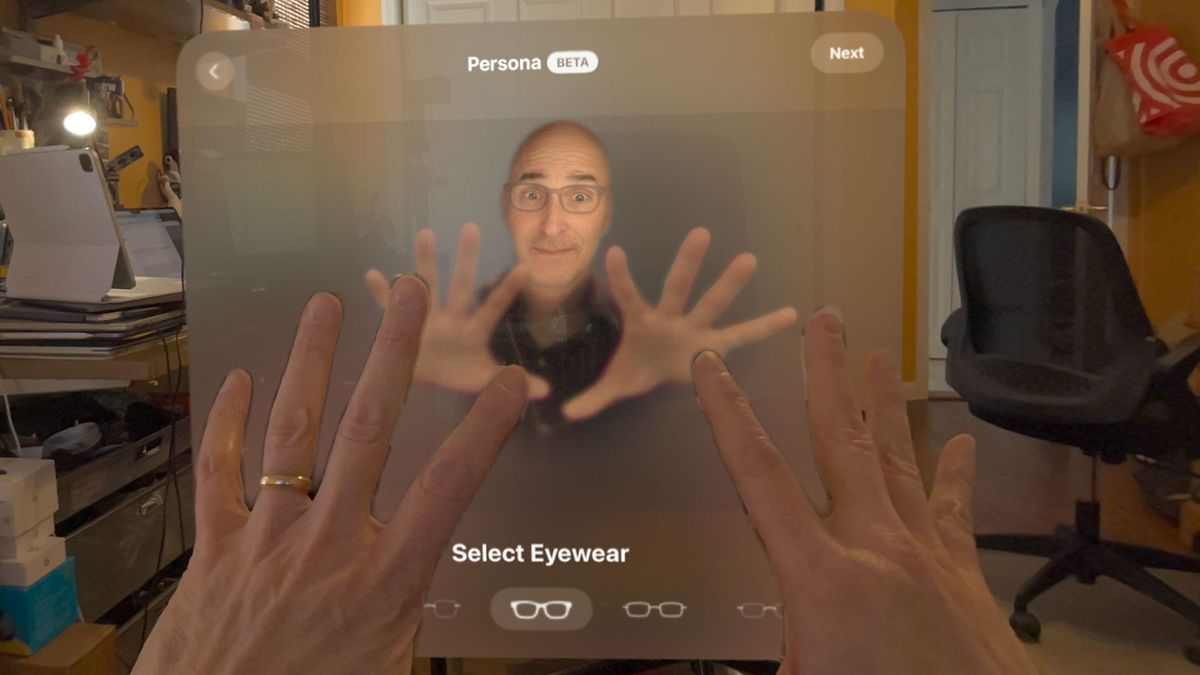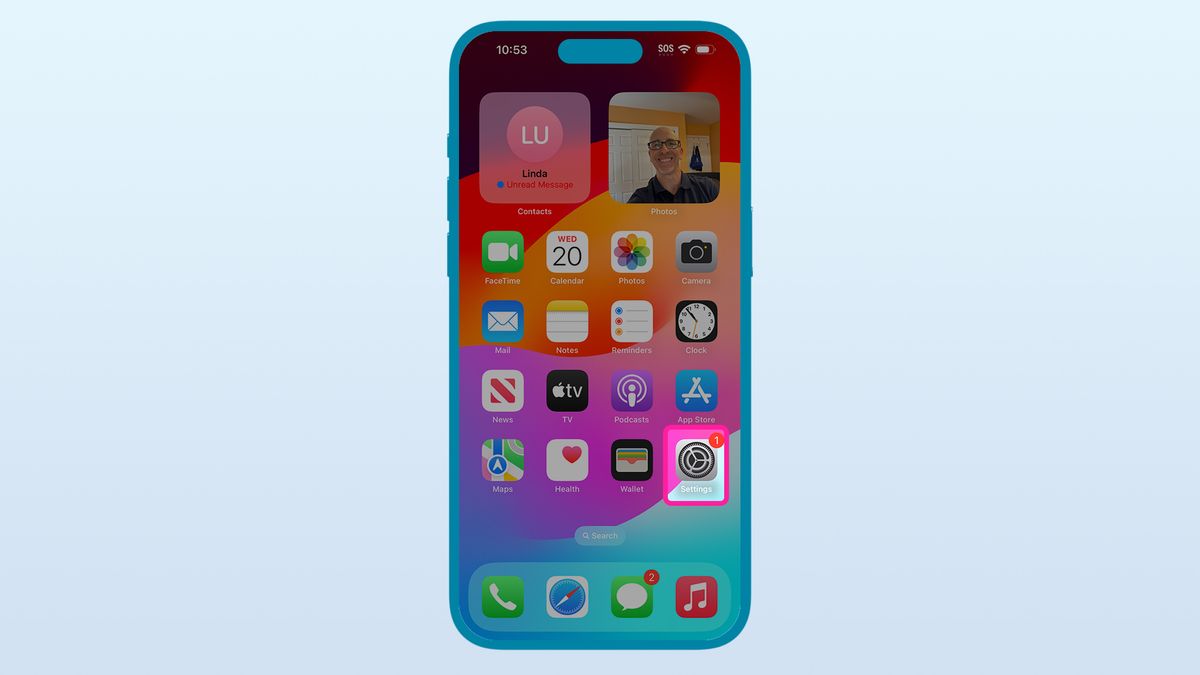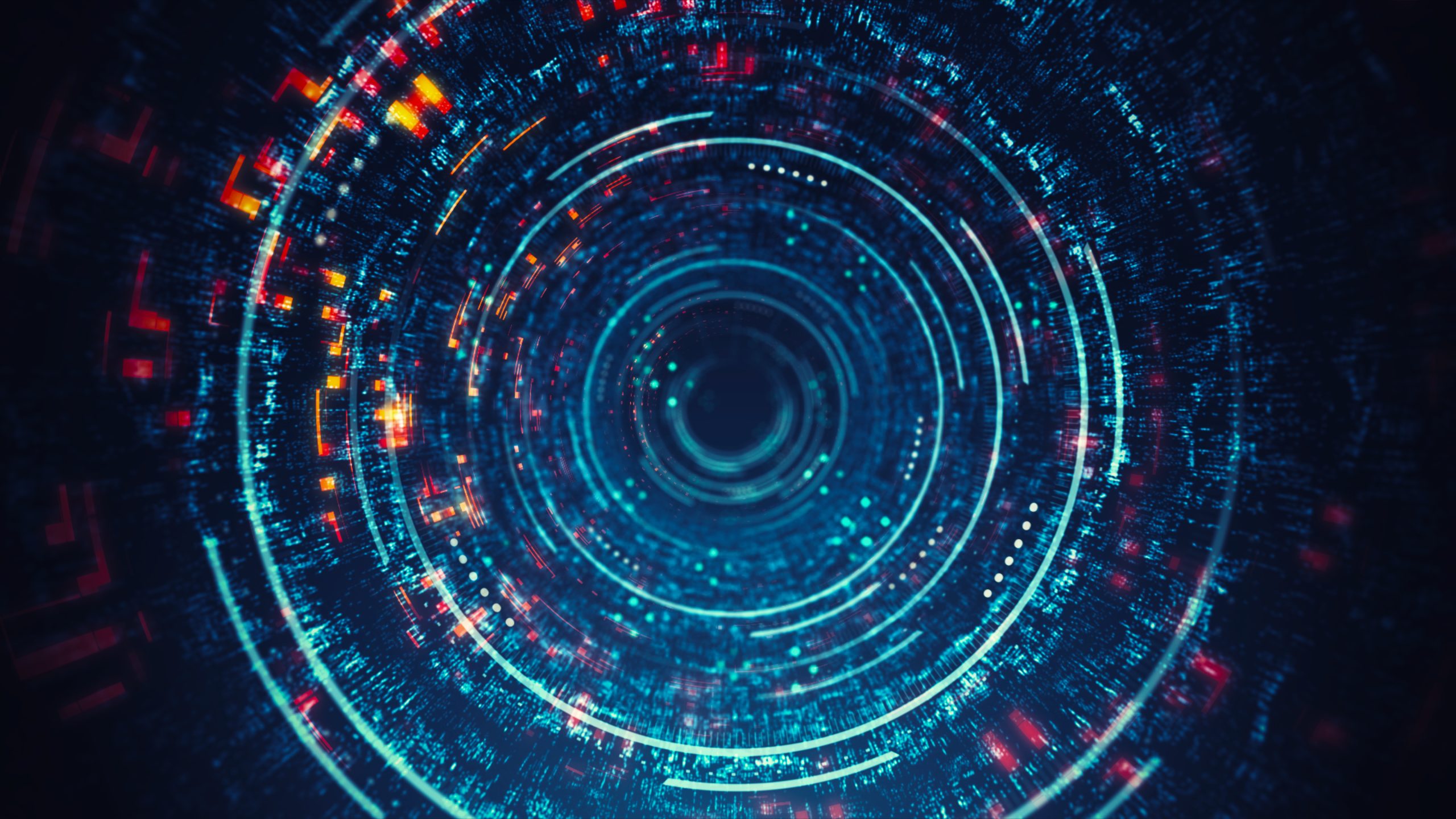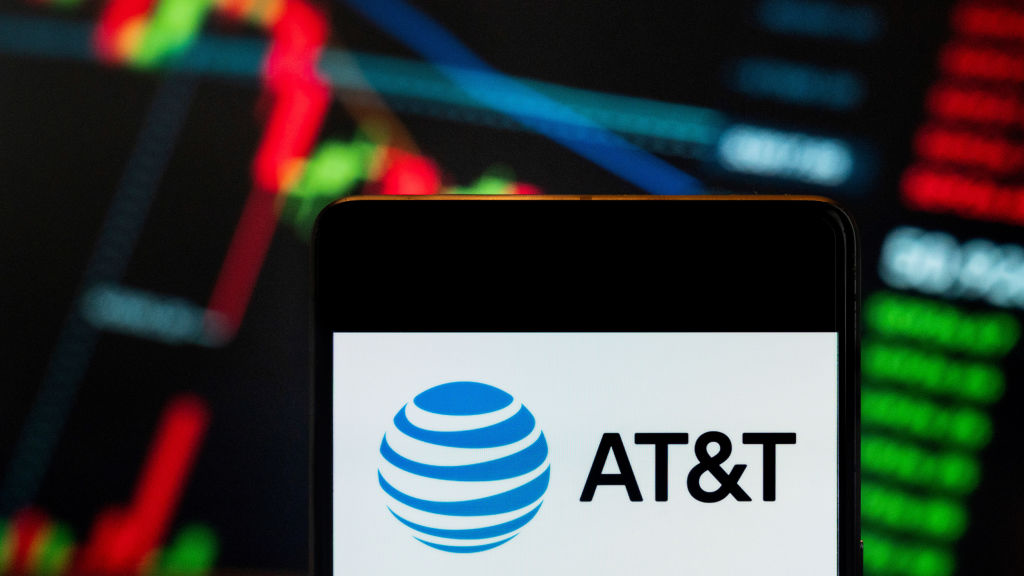I finally look a little less creepy with my Apple Vision Pro mixed reality headset. Oh no, I don't mean I look less weird when I wear it, but if you FaceTime me, you'll probably find my personalized Persona, digital Lance, a little less rare.
While the Apple Vision Pro hasn't been on the market for long and the $3,499 headphones aren't owned in iPhone numbers (think tens of thousands, not millions), this first major update to visionOS is a big one.
I found it in Settings when I put on the headphones for the first time in a week (yes, that's right, I don't use the Vision Pro as often as I would my pocket iPhone) and quickly accepted the update. The download and installation took about 15 minutes to complete.
VisionOS 1.1 adds, among other things, enterprise-grade mobile device management (MDM) controls, closed captioning and virtual keyboard improvements, improved Home View control, and the aforementioned Persona improvements.
I haven't tried all of these features, but I couldn't wait to try the updated Personas. Despite the update, People is still a “beta” feature. visionOS 1.1 improves the quality of People and adds a hands-free creation option.
Before we begin, here's a look at my old Vision Pro Persona. Don't look away.
Personas are Vision Pro's digital versions of you that you can use on video conference calls on FaceTime and other supported platforms. The 3D image is not a video of your face. Instead, Vision Pro creates this digital simulation based on a spatial photo capture of your face. Even the glasses I have on my Persona aren't real.
During my initial review of the Vision Pro, I followed Apple's headphone instructions and held the Vision Pro in front of my face with the shiny glass front facing me. Vision Pro's voice guidance told me to slowly look left, right, up and down, and make some facial expressions. All of this allows the stereo cameras to capture a 3D image map of my face.
Because there are also cameras inside the headset to track my eyes (and eyebrows) and a pair of cameras on the outside of the headset pointing toward my face and hands, the Vision Pro can, depending on how I move my face (and hands), manipulate my digital persona like a puppet.
There is some agreement that the Apple Vision Pro Personas are a lot like us, but they also straddle the line between reality and the uncanny valley. This update is apparently designed to help with that.
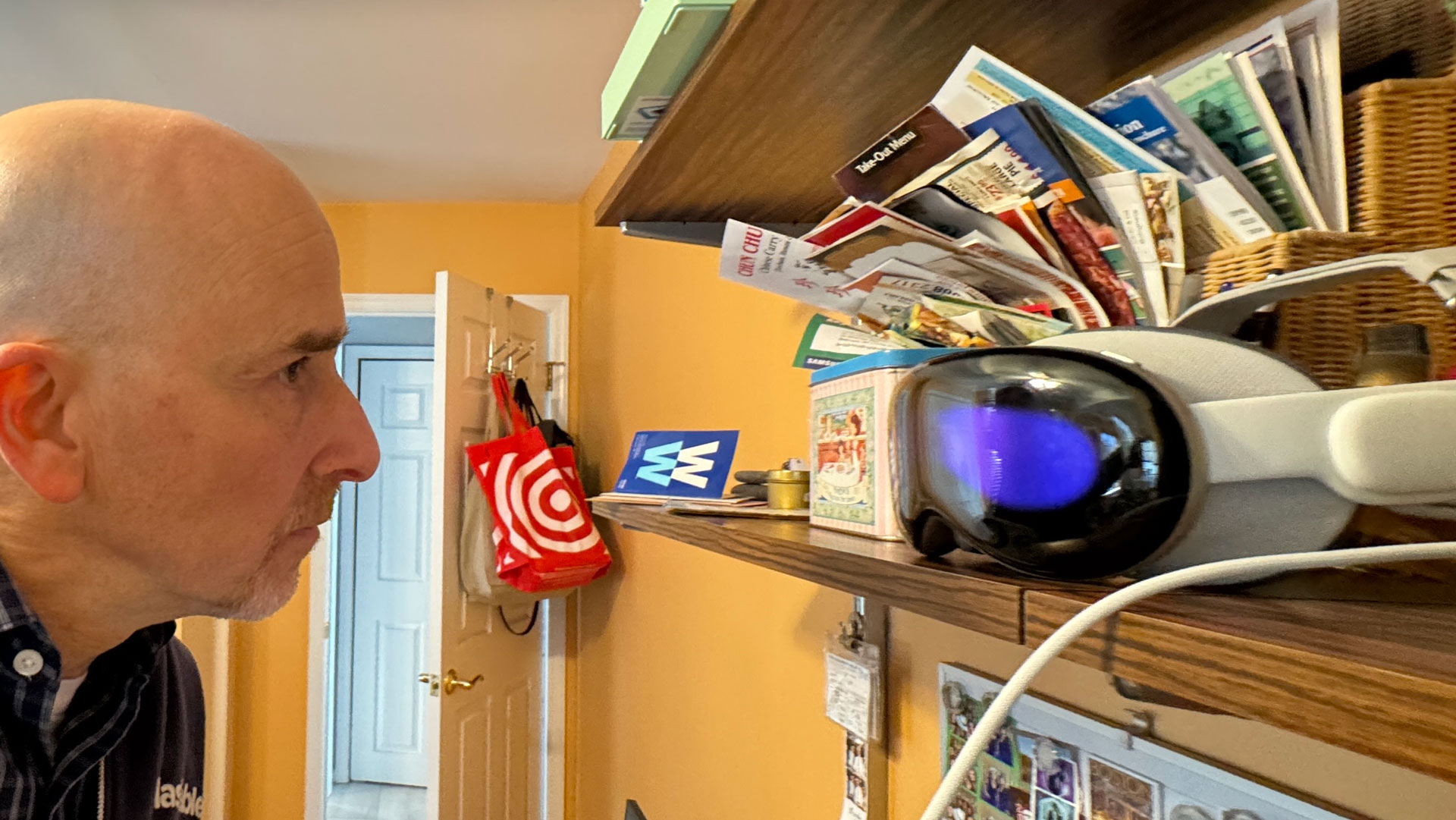
Apple, however, added a new aspect to the process. Now I can capture my Persona “hands-free,” which sounds great, but it means placing the Vision Pro on a table or shelf and then sitting in front of the headset. Good luck finding a platform that is at exactly the right height. I used a shelf in our home office, but I had to crouch down so Vision Pro could read it properly. On the other hand, I didn't have to hold the 600g headset in front of my face. Handheld capture still occurs while wearing the headphones.
It took Vision Pro about a minute to create my new Persona (see above). The result looks a lot like me and is less creepy in my opinion. It still matches my expressions and hand movements almost perfectly. While my original Persona seemed to lack soul, this one has more warmth. I also noticed that the capture looks wider. My ears and bald head look a little fuller and I can see my clothes more. I feel like a full body scan and total persona won't be far behind.
This alone makes the visionOS 1.1 upgrade worth it.
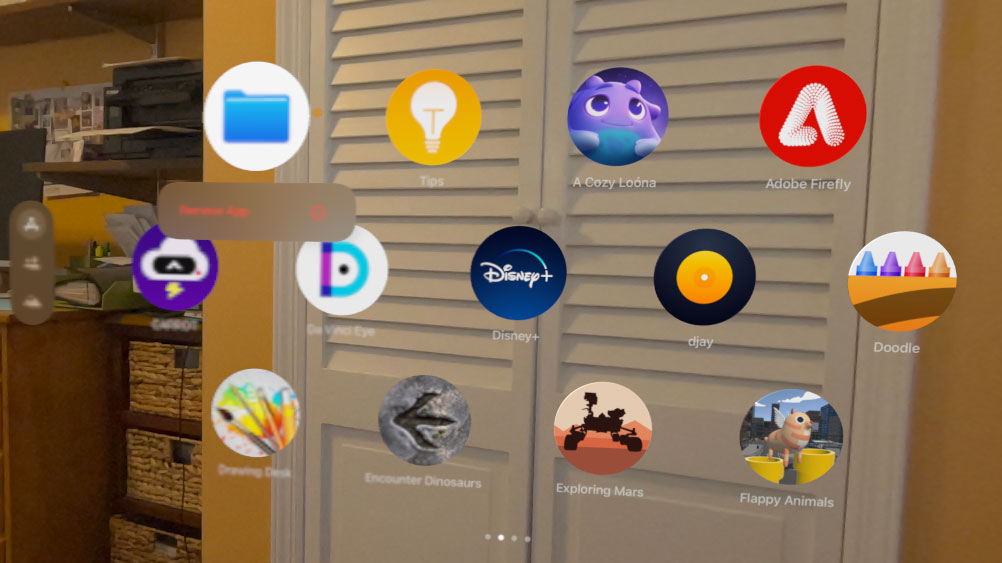
Other useful feature updates include the ability to remove system apps from Home View. To do this, I looked at an app, in this case Files, and held my thumb and forefinger together until the “Delete app” message appeared.
Apple also says it has updated the virtual keyboard. In my initial review, I found this keyboard to be one of the Vision Pro's weakest features. It's really difficult to type accurately on this floating screen and you can only use two fingers at a time. My accuracy was terrible. In the update, the accuracy and the AI guessing what you intended to type seems somewhat improved.
Overall, it's good to see Apple moving quickly to roll out features and updates to its powerful spatial computing platform. I'm not sure hands-free spatial scanning is really useful, but I can report that my digital persona will no longer make you scream out of the room.

